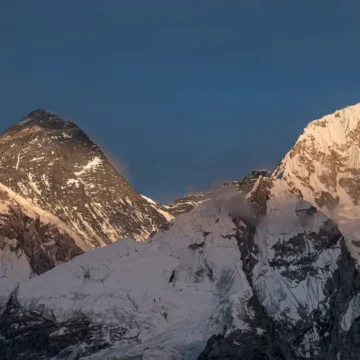
The Meaning Behind Mani Stone and Chortens on Nepal Trek
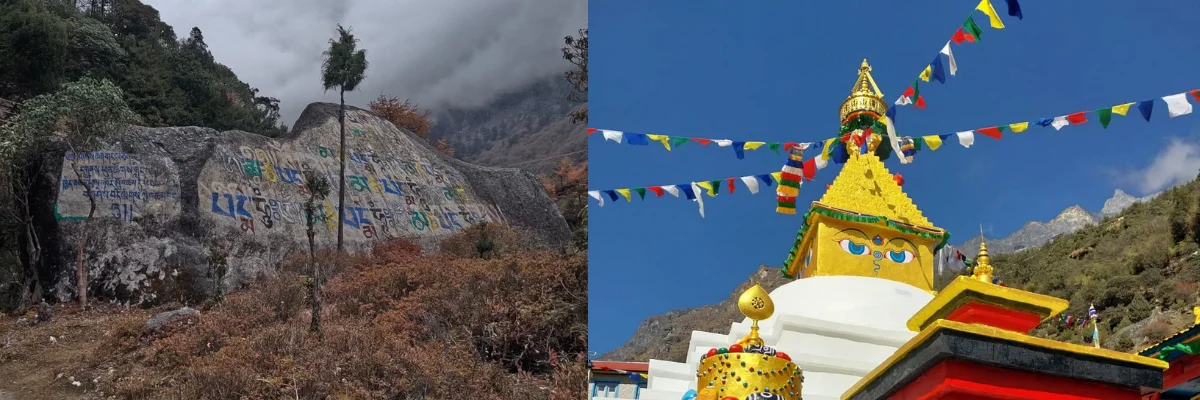
Table of Contents
You might have seen mani stone and chortens while going through mostly Buddhist residing areas like Everest region. They are not just aesthetics but carry a deeper meaning that really brings a positive impact. Ever wondered why trekkers pause near Mani stones, chortens, and prayer wheels? What secrets of devotion do they hold?
What are Mani Stones? Sacred Words in Stone
Mani is a Sanskrit word that comes from the sutra “six-word Dharani” (Om Mani Padme Hum). Many people call them mani stones because the word “Mani” is inscribed on the stone.
Many people believe mani stone comes from Tibetan Buddhism, but that’s not the case. It comes from the indigenous religion called the Bon tradition, where people used to worship mountain gods and stones.
Mani stones have become unique Tibetan carving art. Devout Tibetan pilgrims believe those words on stone chants day and night, which enable supernatural spirits and bring them good luck and happiness.
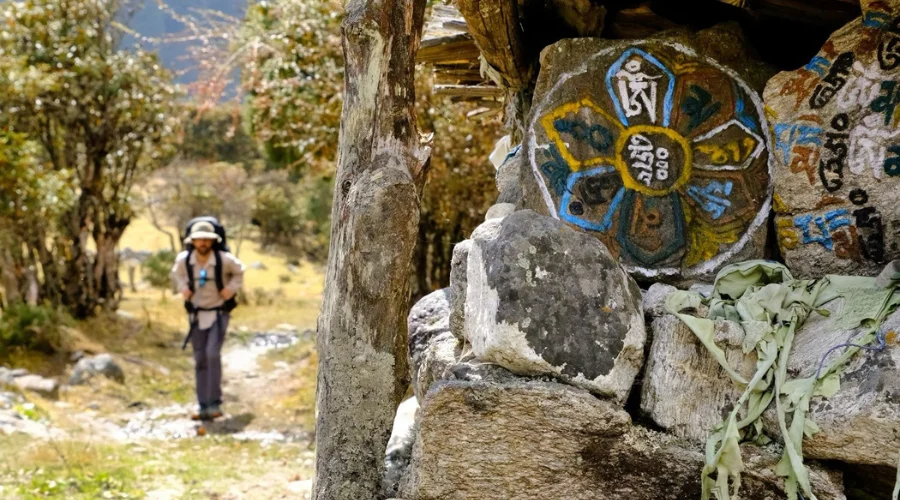
Mani Stones once served as homes for deities, tribal protectors, and boundary markers. Tibetans placed them on roads, bridges, and passes for safety and merit, and over time, they grew into sacred walls.
Tibetans still add stones when passing by each stone like a prayer, forming mounds that bridge the human and divine realms. Mani stones are flat or rounded stones inscribed with sacred mantras like “Om Mani Padme Hum,” featuring carved Tibetan script and Buddhist symbols, and are often arranged in walls or cairns.
What is a Chorten? Himalayan Stupa of Devotion
You can find chortens across the Himalayas from Bhutan, Nepal to Tibet. While on a Nepal tour or high-altitude treks like the Annapurna Circuit Trek, you come across chortens.
These chortens have aesthetic value but also carry deep meaning in Buddhism. Chortens are also called stupas and can be seen while exploring different locations of Kathmandu, like Swayambhu and Boudhanath.
It symbolizes Buddha’s presence, and sometimes, Devotees build these over the graves of renowned lamas. People in the Tibet believe that performing koras of the monument is an act of high merit.
People envision the structure of a stupa as the meditative figure of Buddha seated on a sacred throne. The pinnacle, where the sun and moon symbols unite, represents his crown.

Just beneath, the square base of the spire stands for his head, while the rounded dome mirrors his torso. The tiered steps below, often arranged in four layers, signify his folded legs in meditation.
At the very bottom, the broad square foundation symbolizes the lion’s throne upon which he rests. Altogether, the Stupa becomes a sacred outline of the Buddha himself, which is still, centred and awakened.
Examples of chortens in different places include the National Memorial Chorten in Thimphu, Bhutan, Chorten of Chhusang and Chorten of Ghiling in Upper Mustang, and Do-Drul Chorten in Boudhanath, Nepal (Not the big dome, it is part of the temple complex, ask locals they will familiarize with that.)
Different types of Buddhists Chortens
There are different types of chortens connected with Buddha’s life, each with unique design and purpose. Some of them include:
Lotus Blossom Stupa
The lotus blossom is linked to the birth of Buddha and reflects the legend that he took seven steps in each direction after being born. Lotus flowers also bloom in each direction symbolizing love, compassion, joy and equanimity.
This sacred imagery inspired artisans to design a stupa and decorate it with lotus motifs. Some versions feature seven-layered lotus steps to honour those first sacred strides.
Stupa of Many Doors or Gates
This Stupa has many door-like structures on all sides, each symbolizing the core teachings the Buddha shared after his enlightenment. This includes four noble truths, the Six Perfections, the Noble Eightfold Path, and the Twelve Links in the Chain of Dependent Origination.
Stupa of Descent from the God Realm
This Stupa honours the time when Buddha, at the age of 42, went on a journey to Tushita Heaven to spend the summer season with his mother (who had been reborn there).
Buddha taught his reincarnated mother about dharma. You can easily recognize the structure by its four central projections, each holding a three-tiered ladder that symbolizes his return to the human world.
Stupa of Great Miracles
This Stupa recalls the extraordinary feats Buddha displayed around the age of 50 when he is believed to have overpowered demons known as maras and tirthas.
The Licchavi tribe built the structure in his honour, the structure stands as a tribute to his spiritual power and mastery over illusion and ego.
Stupa of Reconciliation
This Stupa symbolizes the healing of division within the Buddhist monastic community. At a time when the Sangha (community) was split by internal conflict, the Buddha brought harmony back among his followers.
To honour this act of unity, followers constructed a stupa in Magadha. Its design stands out with four evenly shaped octagonal tiers, reflecting balance and restoring peace.
Stupa of Complete Victory
This Stupa honours the moment when Buddha extended his life by three more months. Its structure features three plain, circular tiers, each reflecting that final extension of time granted through spiritual strength.
Stupa of Nirvana
Marking Buddha ‘s passing at the age of 80, this Stupa embodies his final release into ultimate awareness. Simple in form, with a bell-like shape and minimal decoration, it reflects the serene completion of his earthly journey.
Why Are Mani Walls and Chortens Found on Trekking Trails?
The Himalayas are mostly covered by people who believe in Buddhism. Mani walls and chortens are part of Buddhism. We come across these frequently while on any trek in the Himalayas, like the Everest Base Camp.
They are there to bless the journey, remind travellers of the sacred area and carry deep spiritual meaning in Himalayan Buddhist culture.
Mani walls inscribed with sacred mantras “Om Mani Padme Hum” offer compassion and prayers for all beings. Chortens symbolize the Buddha’s presence and act as spiritual landmarks.
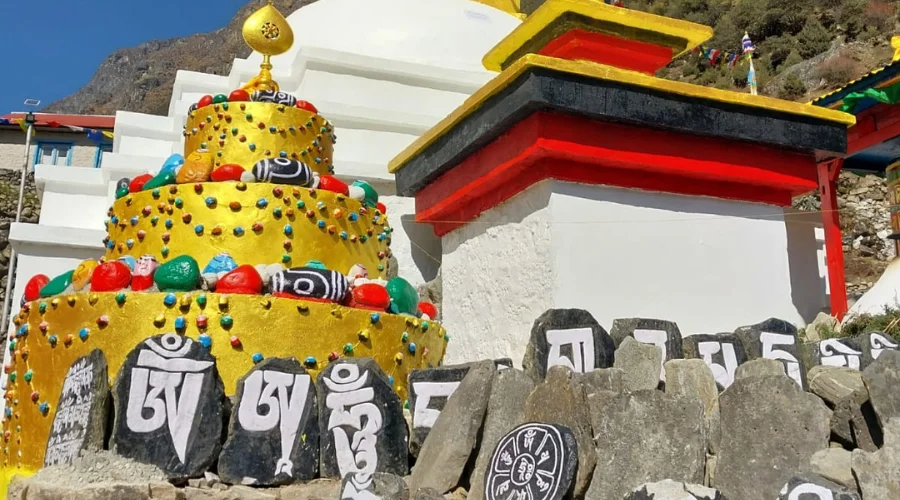
Mani stone and chortens and mani walls can be seen placed at mountain passes, crossroads and village entrances, places where protection and mindfulness are needed most.
These structures also act as protective boundaries. Many believe they dispel negative energy and safeguard travelers on the journey.
Symbolism in Every Detail: Colors, Carvings and Construction
Every part of a chorten (or stupa) is designed with deep spiritual meaning. The colours used which white, red, yellow, green, and blue symbolize the five elements: earth, water, fire, air, and space.
Buddhist people believe these elements make up the universe and the human body, creating balance and harmony The carvings often include the eyes of the Buddha, lotus flowers, and the eight auspicious symbols.
Each carving has a purpose: the lotus stands for purity, the eyes watch over all beings, and the symbols bring protection and good fortune. Construction follows a sacred geometry.
The base symbolizes the earth; the dome represents water; the square tower above it stands for fire; the umbrella for air; and the final point or spire for space.
The entire structure forms a visual map of the Buddhist path to enlightenment. Even the direction a Chorten faces matters usually towards the east, to greet the rising sun, a symbol of awakening.
Mani stones and walls hold deep symbolism in Tibetan Buddhism. The carved mantra “Om Mani Padme Hum” promotes compassion. Stones are stacked in sacred patterns, forming walls that guide travelers and bless the path. Every detail carries spiritual purpose.
Nothing happens by chance; artisans shape every detail with clear intention. These spiritual meanings turn the chorten into more than just a monument, it becomes a sacred mirror of the universe and a guide for those on the path of Dharma.
How Trekkers Should Walk: Etiquette Around Mani Walls and Chortens
In the Himalayan regions like Nepal and Tibet, it is very important for trekkers to note the proper etiquette when it comes to Mani walls and chortens, which are sacred to the Buddhist communities.
Trekkers should always pass to the left of these structures, moving clockwise. This direction follows the natural flow of the universe in Buddhist tradition and people believe it accumulates merit while showing respect to the deities and teachings embodied in the Mani stone and chortens.
Locals consider walking on the right or counterclockwise disrespectful and spiritually inauspicious. Remember, never sit, lean or climb on mani walls or chorten because they are not resting places but sacred monuments.
Artisans inscribe them with scriptures, relics or mantras meant for veneration. Stepping over, climbing or desecrating these structures can deeply offend locals and disrupt the spiritual harmony of the place.
You should also remove hats when passing close by as a gesture of humility and reverence. Following these customs not only shows respect for the local religion and culture but also enriches the experience by connecting visitors to the spiritual significance of the trail.
Famous Trails Where You’ll See Them
Nepal is a country with 8.21% of the total population professing Buddhism, especially in the Himalayas and near the Tibet border. Long and multi-day treks in Nepal are in the Himalayas, and sightings of mani stone and chortens, and mani walls are very common. In the following trials, you will find them.
Annapurna Base Camp Trek
While going from Jhinu, you will come across Chhomrong after trekking for 3 hours. There is a beautiful Gurung village where you will see the Stupa and other attractions.
Everest Base Camp
From Lukla to Namche and onward to Tengboche and beyond, the Everest Base Camp trail is filled with countless chortens, long mani walls, and carved stones.
Upper Mustang Trek
In a region rich in Tibetan culture, mani stone and chortens are everywhere, often perched on ridges or flanking trail entrances.
Langtang Valley Trek
Around Kyanjin Gompa and nearby villages, the path is lined with traditional mani stone and chortens.
Manaslu Circuit Trek
On Manaslu Circuit Trek trail, through Samagaon and Samdo are lined with intricately carved mani walls and majestic chortens, offering a deeply spiritual feel.
Prayer Wheel
Prayer wheels are cylindrical devices made up of a metal cylinder (often copper, silver, or brass), wood or stone. They are designed to spin around an axis that may be a simple handled handle or part of a large installation.
From the outside, they are usually embossed with the mantra “Om mani padme hum” or adorned with auspicious symbols, while inside, the mantras are printed on rolled paper or fabric. Handles wheels use a weighted chain to aid their motion.
You can find the beautiful prayer wheel axis in Swayambhunath temple, Kathmandu. Buddhist people see turning a prayer wheel as spiritually equivalent to reciting mantras aloud, believed to generate merit, purify karma, and foster wisdom and compassion.
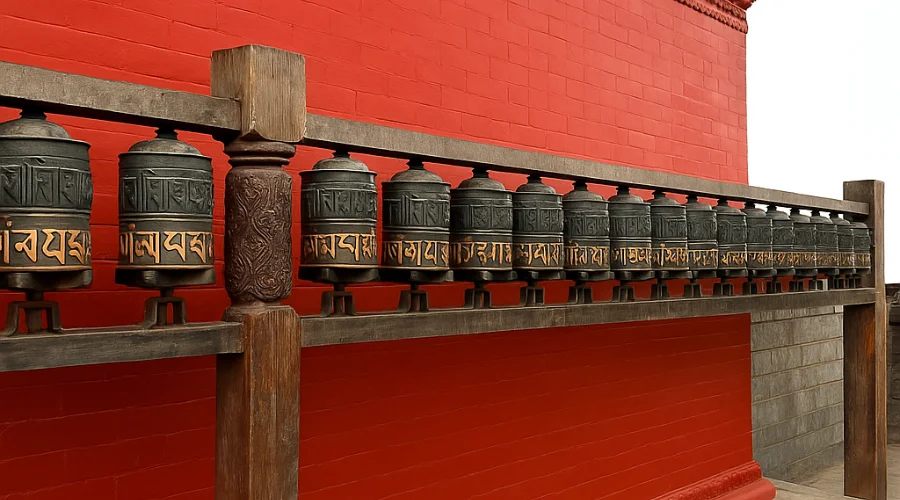
People rotate them clockwise, which is aligned with the sun’s path while cultivating a compassionate mindset. The world’s largest prayer wheel stands in Dalat, Vietnam, at the Samten Hills complex.
As per VietNamNet, it is made of copper and inlaid with 24k gold and measures 37.22 meters high, 16.53 meters in diameter and weighs 200 tons. It is Guinness-certified for being the largest prayer wheel.
Whether small, human‑powered, row-mounted, or powered by wind, water, or electricity, prayer wheels are cherished spiritual tools in Tibetan Buddhist regions. They continuously send blessings into the world through both practice and presence.
Post You May Like: The Meaning and Significance of Nepal’s Mountain Prayer Flags
Responsible Trekking and Respect
You are trekking in different part of the world where culture, traditions and practices are different. Following tips will help you have pleasurable experience.
- Dress modestly, especially near villages and monasteries. Wear clothes that are not too revealing.
- Not Everyone likes being photographed without permission; ask for permission before taking pictures of people or shrines.
- Don’t be too loud with your voice and activity, and respect local customs.
- Don’t litter, especially around sacred areas and carry your trash out. Avoid spitting near mani stone and chortens and mani walls.
- Do not touch or move the carved and perfectly placed mani stones.
- Take photos from a distance and avoid gestures that might appear disrespectful.
- Refrain from touching or altering carvings or prayer inscriptions.
- Let your presence reflect humility and understanding of the cultural space.
Want to know more?
Speak to an Expert





Sandip Dhungana
Nepal 🇳🇵
Whatsapp: +977-9823636377

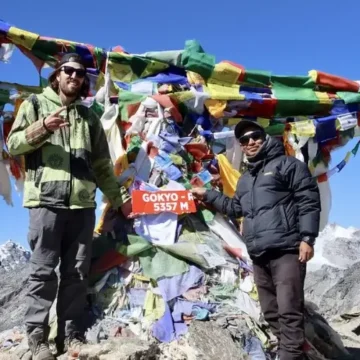
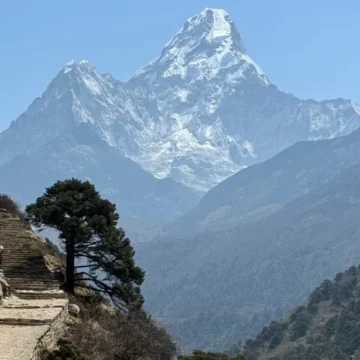



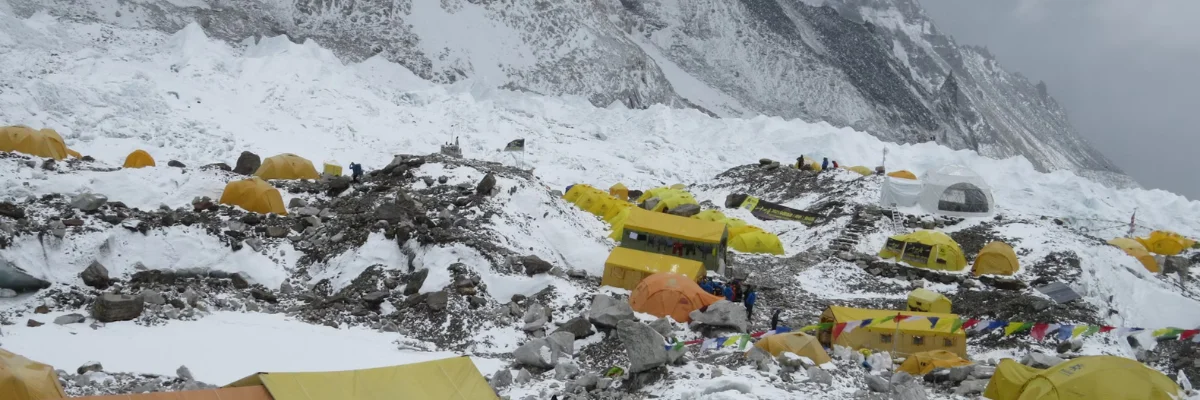
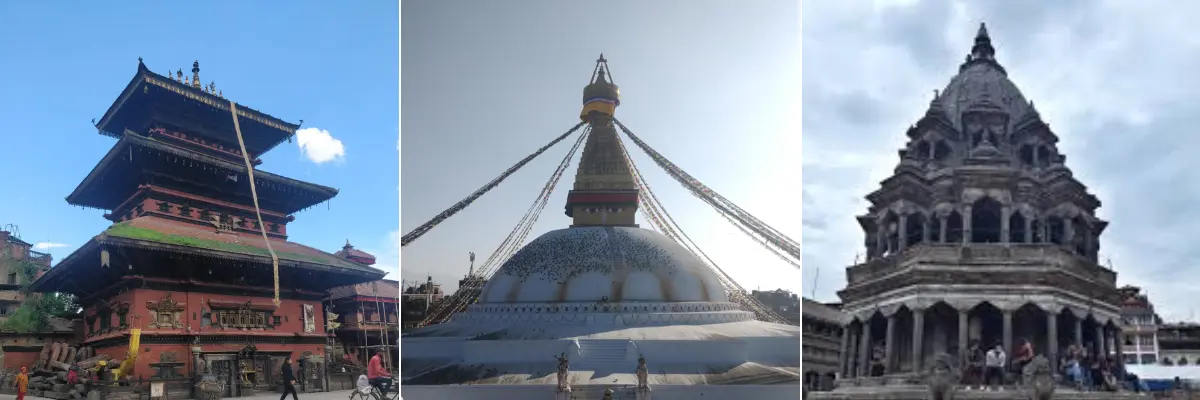
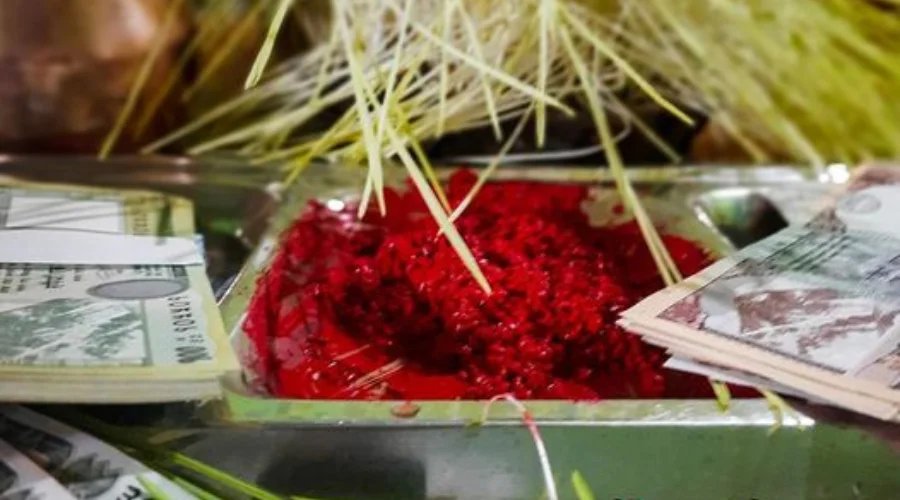
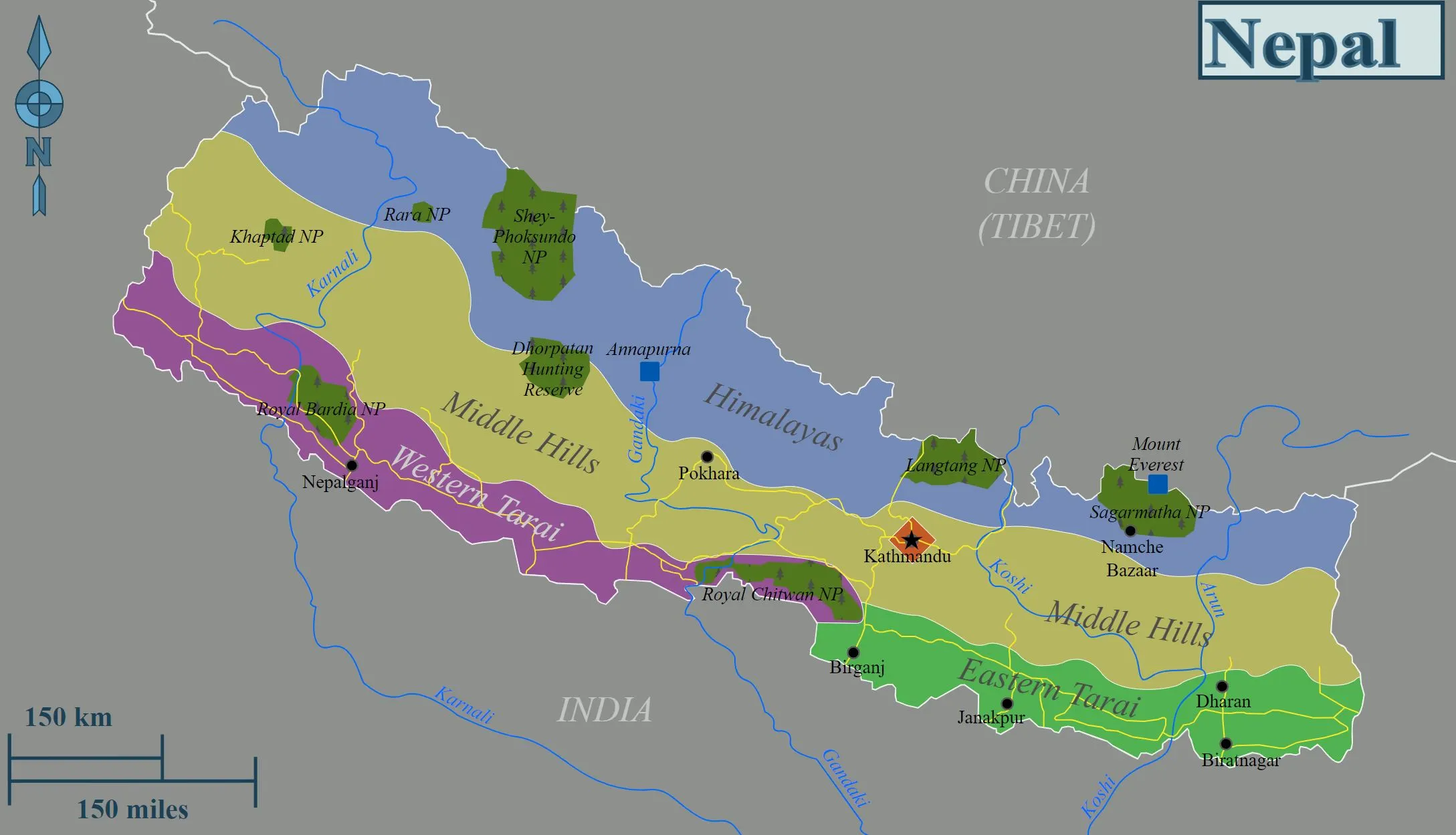
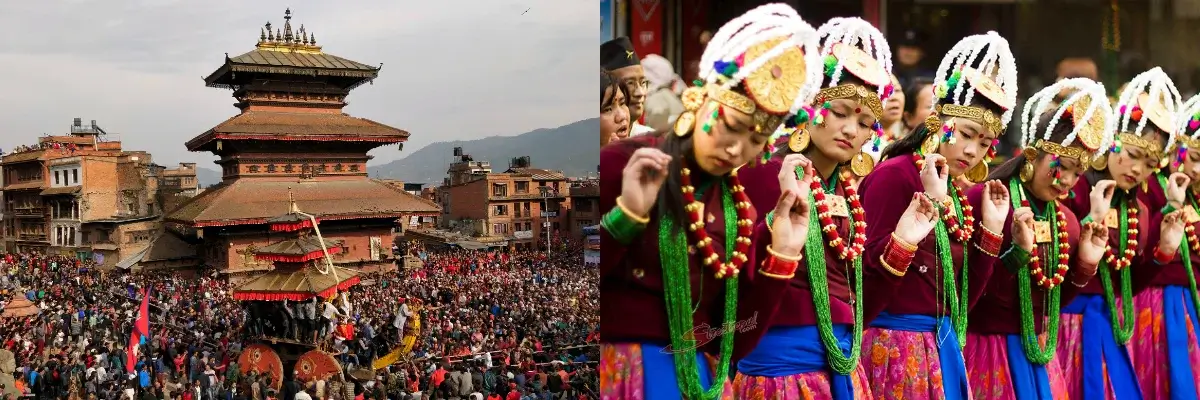
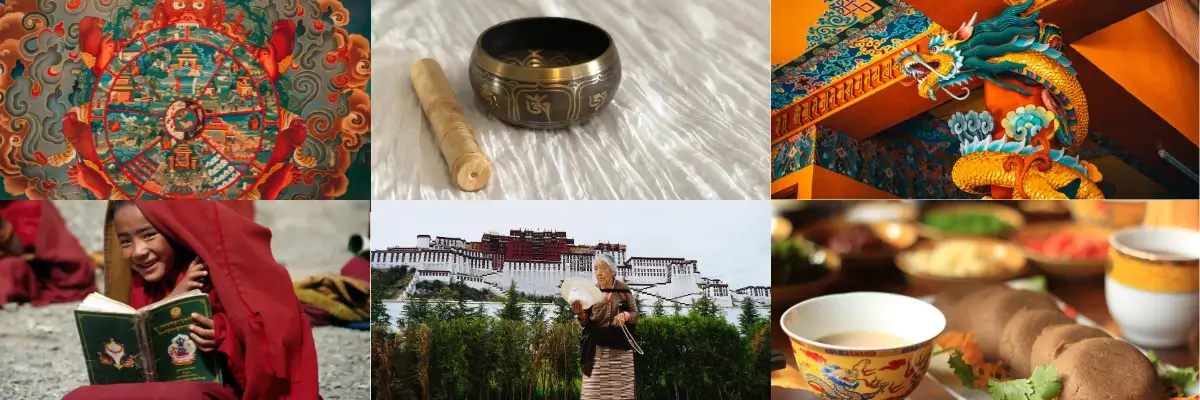
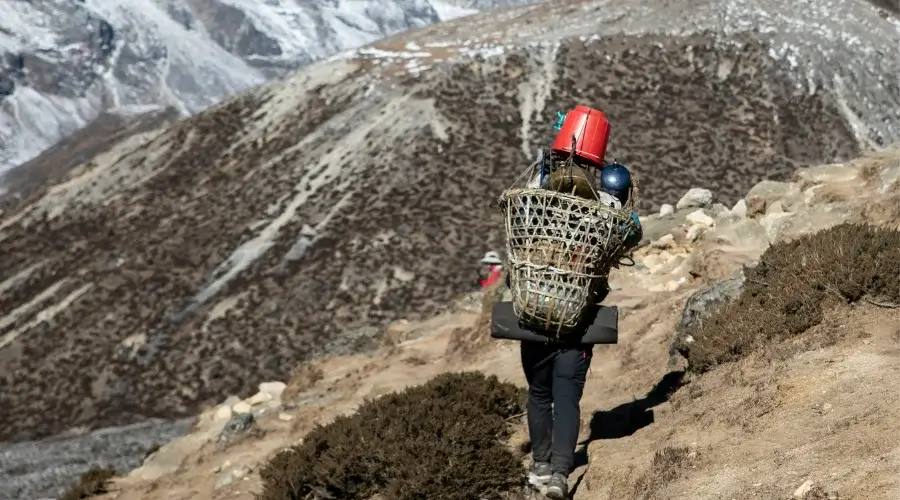













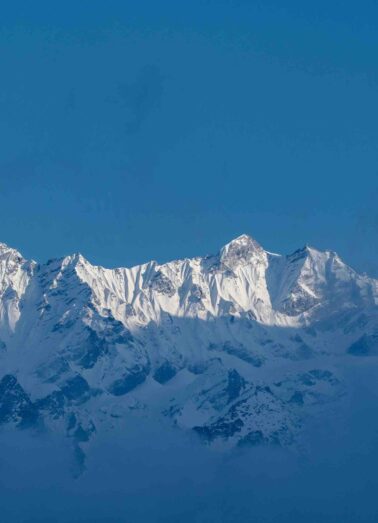

Leave Your Comment